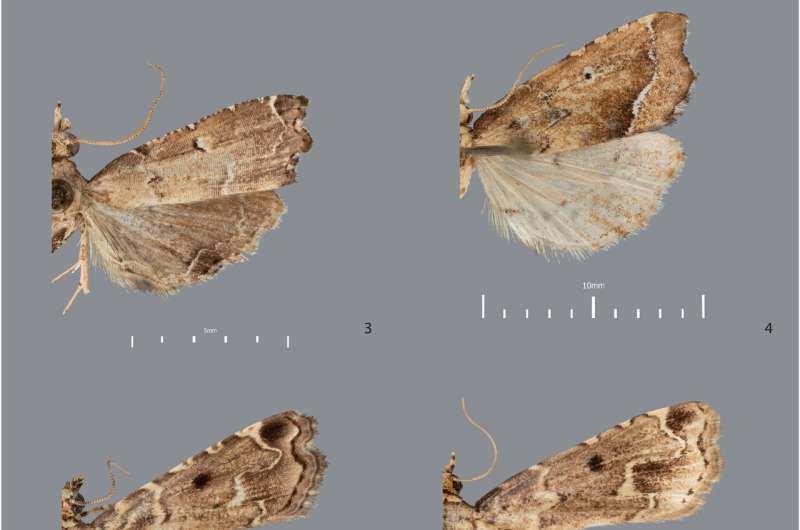In a heartwarming twist for nature lovers, scientists have uncovered a treasure trove of new moth species in the Philippines, all thanks to diligent research and a bit of patience. This remarkable discovery shines a light on the importance of biodiversity, while reminding us of the hidden wonders within natural history collections.

Scientists at the Museum für Naturkunde Berlin recently made headlines with the unveiling of 40 previously unknown moth species from the lush landscapes of the Philippines. These moths belong to the snout moth family (Crambidae), a diverse yet often overlooked group that plays crucial roles in their ecosystems.
Dr. Théo Léger, a lepidopterist leading this exciting research, emphasizes the Philippines as a biodiversity hotspot, rich in endemic species not found anywhere else. “These unique habitats face severe threats from deforestation and escalating human activity,” Dr. Léger states. “It’s essential to record the rich biodiversity here before it’s possibly gone forever.”
The journey of discovery began with two studies. The first, led by Dr. Léger and published in the Bulletin of the Society of Systematic Biologists, explored the Crambinae and Scopariinae subfamilies. Meanwhile, the second study, undertaken by Anne Müller for her bachelor’s thesis, focused on the newly identified subfamily, Lathrotelinae, as reported in the Journal of Asia-Pacific Biodiversity.
What’s truly fascinating is that these discoveries were made from nearly 700 moth specimens resting in collections in Berlin and Copenhagen—some of which had been stored away for over 30 years! This showcases the untapped scientific potential locked within museums, patiently waiting for curious minds to unlock their secrets.
The studies revealed astonishing results: over half of the examined specimens were recognized as new species! Additionally, the researchers discovered numerous cryptic species—moths that may look alike but are genetically distinct. Such findings deepen our understanding of ecosystems and species adaptations, especially in light of climate change.
Some of these snout moths, like the notorious rice stem borer, hold agricultural significance, impacting crops across South and Southeast Asia. Thus, the implications of this research reach far beyond academic curiosity, affecting livelihoods and food security.
Looking ahead, the researchers are eager to explore the untamed regions of the Philippines, particularly the remote mountain areas that remain largely unstudied. Future adventures promise even more incredible findings, and who knows what other wonders are hiding in the world’s biodiversity?
More information:
Théo Léger, “Half of the Diversity Undescribed: Integrative Taxonomy Reveals 32 New Species and a High Cryptic Diversity in the Scopariinae and Crambinae of the Philippines (Lepidoptera: Crambidae),” Bulletin of the Society of Systematic Biologists (2024). DOI: 10.18061/bssb.v3i2.9527
Anne Müller et al, “Assessment of species diversity of the Lathrotelinae (Lepidoptera: Crambidae) from the Philippines using morphology and DNA barcoding reveals eight new species,” Journal of Asia-Pacific Biodiversity (2025). DOI: 10.1016/j.japb.2025.01.012
If you would like to see similar science posts like this, click here & share this article with your friends!


